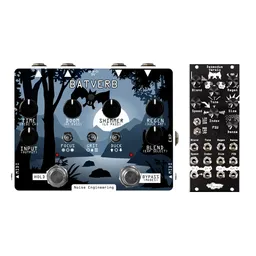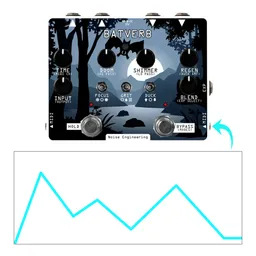Earlier this year, we introduced the Vice Virga, our take on a sequential switch. Today, we’ll explore one of its random modes, and use it to create a unique type of randomized gate sequencer.
Random exclusivity
There are many, many ways to generate random gates and triggers in Eurorack. In fact, over the years, we’ve made a couple of modules dedicated to randomized modification of triggers and gates. It may seem as though gate randomization has been worked out to its fullest extent, but this is Eurorack: there are always new concepts to explore!
The Eurorack world has lots of random gate generators with lots of different feature sets. A common feature is that a channel will fire off a gate at random (because random gate generator), and sometimes it won’t, and that’s the end of it. This style of random is great for some patches, but sometimes a bit of refinement is really helpful.
Enter Vice Virga. VV’s 1>1? mode randomly routes a single input to a single output each time a trigger is received at the Advance input. This means that if we patch a voltage offset to a single input, one output will be high, randomly, each time we advance.

What’s this good for?
The great thing about this type of random is that we can do things like sequence a completely random drum pattern without voices repeating, or distribute a sequence to four different voices without them overlapping. We can also use it for randomized control signals: for instance, pair with a Pons Asinorum to randomly trigger different envelopes one at a time. This opens up options for all sorts of randomized rhythmic sequencing
Let’s listen
Here, we’ve created a patch with four drum voices. I have Vice Virga set to the 4 group, so I have two separate switches to work with. I’ve run a copy of our drum mix through the bottom switch, and patched one output to a reverb, so every once in a while we’ll get some ambience in our loop, for extra flare.
What else can we use this for?
I like to use one sequence to play multiple voices to create variety in a patch, and by multing a pitch sequence to four voices and triggering them with this random gate patch, we can get some nice variety without voices overlapping. It’s also an interesting source of modulation: patch your four random gates to four CV inputs on something like a Basimilus Iteritas Alter, and you’ll have a big variety in timbre each time you trigger it. Kris is a fan of using rhythmic gate sequencing on the Pura Ruina CV inputs as well: Pura Ruina acts as a sort of anti-filter, adding harmonics in, and when rhythmically sequenced it can broaden the sound and make it much bigger.






